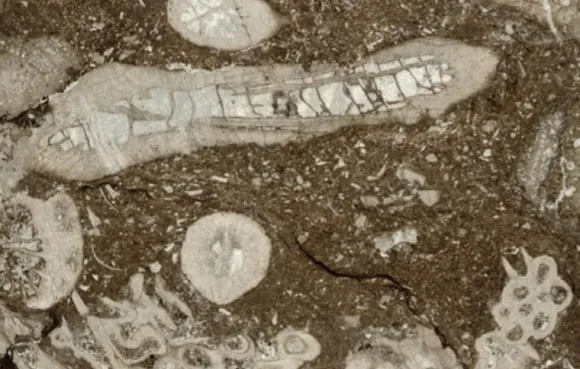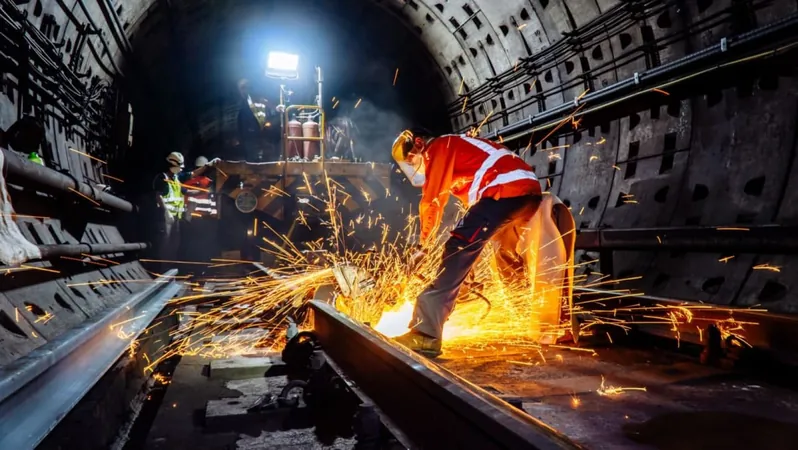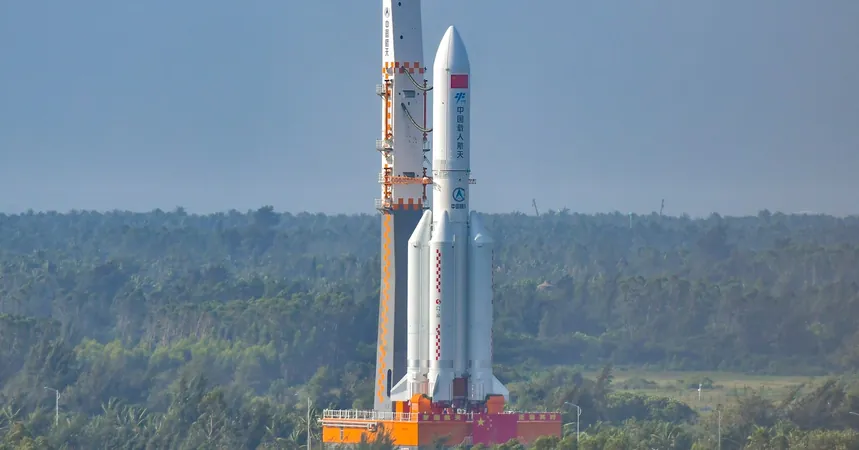
Ancient Coral Reefs Reveal Secrets of Early Photosymbiosis—Are Our Oceans at Risk?
2024-10-28
Author: Ming
Groundbreaking Evidence from the Devonian Period
Recent research has uncovered groundbreaking evidence of photosymbiosis in corals dating back to the Mid-Devonian period, approximately 385 million years ago. This exciting discovery sheds light on the intricate relationships between corals and their photosynthetic partners, revealing that this symbiotic connection may have been crucial for the health and productivity of ancient marine ecosystems.
Modern Corals and Their Partnerships
Modern corals, part of the scleractinians group that emerged during the Triassic, are renowned for their partnerships with algae and other organisms that promote nutrient recycling in nutrient-scarce waters. Yet, until now, it was unclear if earlier, extinct coral species, such as tabulate and rugose corals, shared this vital relationship.
Research Insights from the Max Planck Institute
Research led by Jonathan Jung from the Max Planck Institute for Chemistry highlights key aspects of the Devonian era. This period was characterized by elevated sea-surface temperatures and atmospheric carbon dioxide levels compared to today, as well as a distinct carbonate chemistry dominated by calcite precipitation due to lower calcium-magnesium ratios in seawater. The Mid-Devonian was marked by a major expansion of metazoan reefs, with well-preserved fossil evidence found across Europe, North America, North Africa, Australia, Siberia, and China.
Ecological Collapse and Reef Diversity
These ancient coral reefs flourished along the Rheic Ocean, which lay at the intersection of the southern Laurussian margin and northern Gondwana. The Givetian stage, approximately 387-382 million years ago, was a peak era for diversity and expanse of these reefs. However, a significant ecological collapse occurred during the Kellwasser Crisis in the Late Frasnian, about 372.2 million years ago, drastically reducing reef complexity and species diversity.
Findings on Coral Photosymbiosis
As researchers delved deeper into the fossilized remains of tabulate and rugose corals, they utilized nitrogen isotopes (15N/14N) to identify energy sources utilized by the corals. Their findings indicated that while tabulate corals likely hosted photosymbionts, rugose corals typically did not, marking the former as a significant player in ancient reef productivity.
The Implications for Coral Resilience
This research highlights the critical conditions of widespread oligotrophy during the Devonian, which may have catalyzed coral photosymbiosis—a phenomenon linked to the remarkable productivity of these reef ecosystems. The presence of photosymbiotic relationships in Mid-Devonian corals was vital for adapting to warm climates, akin to the situations observed in the Late Triassic and Early Miocene, periods known for similar warm conditions.
Modern Threats to Coral Ecosystems
However, the contrast with today’s rapid global warming due to human-induced greenhouse gas emissions raises significant concerns about the future of coral reefs. Present-day coral bleaching and mortality events expose the fragility of these ecosystems, with experts warning that the pace of temperature increases may outstrip the ability of coral-alga symbiosis to adapt.
Call to Action for Ocean Conservation
“This historical resilience in coral photosymbiosis does not mitigate the alarming threats posed by current environmental changes—highlighting urgent action to protect our oceans,” warns Dr. Jung.
Conclusion and Future Outlook
This landmark study, published in the esteemed journal *Nature*, underscores the enduring legacy of ancient coral reefs and serves as a stark reminder of the precarious state of modern marine ecosystems amid climate change.
**Don't miss out on the latest developments in coral research! What does the future hold for our oceans?**


 Brasil (PT)
Brasil (PT)
 Canada (EN)
Canada (EN)
 Chile (ES)
Chile (ES)
 España (ES)
España (ES)
 France (FR)
France (FR)
 Hong Kong (EN)
Hong Kong (EN)
 Italia (IT)
Italia (IT)
 日本 (JA)
日本 (JA)
 Magyarország (HU)
Magyarország (HU)
 Norge (NO)
Norge (NO)
 Polska (PL)
Polska (PL)
 Schweiz (DE)
Schweiz (DE)
 Singapore (EN)
Singapore (EN)
 Sverige (SV)
Sverige (SV)
 Suomi (FI)
Suomi (FI)
 Türkiye (TR)
Türkiye (TR)